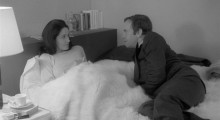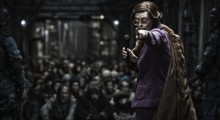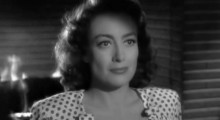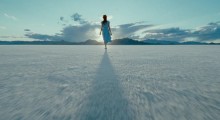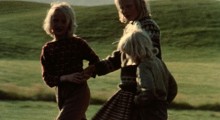Video Essay
-
Watch: Why Are Christmas Films So Bleak?

Five days behind schedule, here’s a great Criterion essay from Michael Koresky on the bleak sentiments behind some of cinema’s classic and overlooked Christmastide tales. Suggesting the holiday’s proximity to winter solstice, and thus, the death of light, Koresky explores the backwards tendency to characterize a time of joy and harmony with mortality, existential crises, and dysfunction in Mon Oncle Antoine, My Night at Maud’s and A Christmas Tale. I’d scarcely be the first to suggest how peculiar it is that the quintessential all-ages Christmas film, It’s A Wonderful Life, is centrally preoccupied with suicide.
by Sarah Salovaara on Dec 30, 2014 -
Watch: Paul Thomas Anderson’s Use of Steadicam

On the almost eve of Inherent Vice‘s release, here is a Kevin B. Lee video essay from the archives that analyzes Paul Thomas Anderson’s varied use of steadicam. Whether it’s enhancing the subjectivity of his principal character’s experience in Sydney/Hard Eight, juggling multiple entries through the guise of spectacle in Boogie Nights, or exploring relationships through space in Punch Drunk Love and There Will Be Blood, Anderson continually pushes the camera technique to new applications.
by Sarah Salovaara on Dec 10, 2014 -
Watch: Anatomy of a Gag in Jacques Tati’s PlayTime

In honor of the Criterion release of The Complete Jacques Tati, David Cairns looks at the building blocks of the auteur’s visual gags in PlayTime, his finely choreographed exploration of technology and the modern era. In particular, Cairns examines Tati’s use of reflections and mirror images, as well as the illusion of space, which all play into the rigidity of the film’s expansive set pieces and its fractured narrative.
by Sarah Salovaara on Oct 30, 2014 -
Watch: Visualizing Character Choice in Snowpiercer

“How do you show character choice,” wonders Tony Zhou in this abridged version of his popular “Every Frame a Painting” essay series. Void of melodramatic “there’s no turning back” declarations, Zhou points towards Snowpiercer as a film that is constantly conveying its protagonists’ decision making process through right and left camera looks. Just as effective, if not a touch more subtle than its vocalized counterpart. Be forewarned: massive spoilers ahead.
by Sarah Salovaara on Oct 29, 2014 -
Watch: Film Noir as a Subversion of Melodrama

Noir is a “challenge to dominant values,” according to critic Peter Labuza in this concise visual essay on one of cinephiles’ favorite “modes.” Bridging The Classical Hollywood Cinema with the writings of Linda Williams, Labuza considers film noir as a method of subverting the building blocks of melodrama, thus imbuing its viewers with a “feeling of displacement.” Perhaps most disorienting is that in everything from Mildred Pierce to My Name is Julia Ross, there is no weepy sense of satisfaction for the taking.
by Sarah Salovaara on Oct 20, 2014 -
Watch: The Art of Terrence Malick’s Voiceovers

They’re a tricky thing, voiceovers, and arguably no one utilizes them as frequently and as effectively as Terrence Malick. Where many filmmakers deploy them as an expository device, Malick allows voiceovers to deepen his characters’ perspectives through literal and abstract observations. This video essay from Kevin B. Lee and Scott Tobias at the Dissolve analyzes the evolution of voiceovers in Malick’s films, from a young Sissy Spacek and Linda Manz in Badlands and Days of Heaven to the layered choruses of The Tree of Life and To The Wonder.
by Sarah Salovaara on Oct 15, 2014 -
Watch: Breaking Down the Essay Film

With the Chris Marker series underway at BAM this week, it seems like a topical time to share this 2013 rumination on the essay film from Kevin B. Lee. Lee purports that the essay diverges from the rest of cinema in how it “[explores] its subject and at the same time [explores] how it sees its subject.” Words, images and sound interact and inform one another, producing a commentary that is often relegated to the external, or the conscience of the viewer. In his visual discussion of the three pillars of an essay film, Lee draws on Marker’s own Sans Soleil, Godard […]
by Sarah Salovaara on Aug 18, 2014
